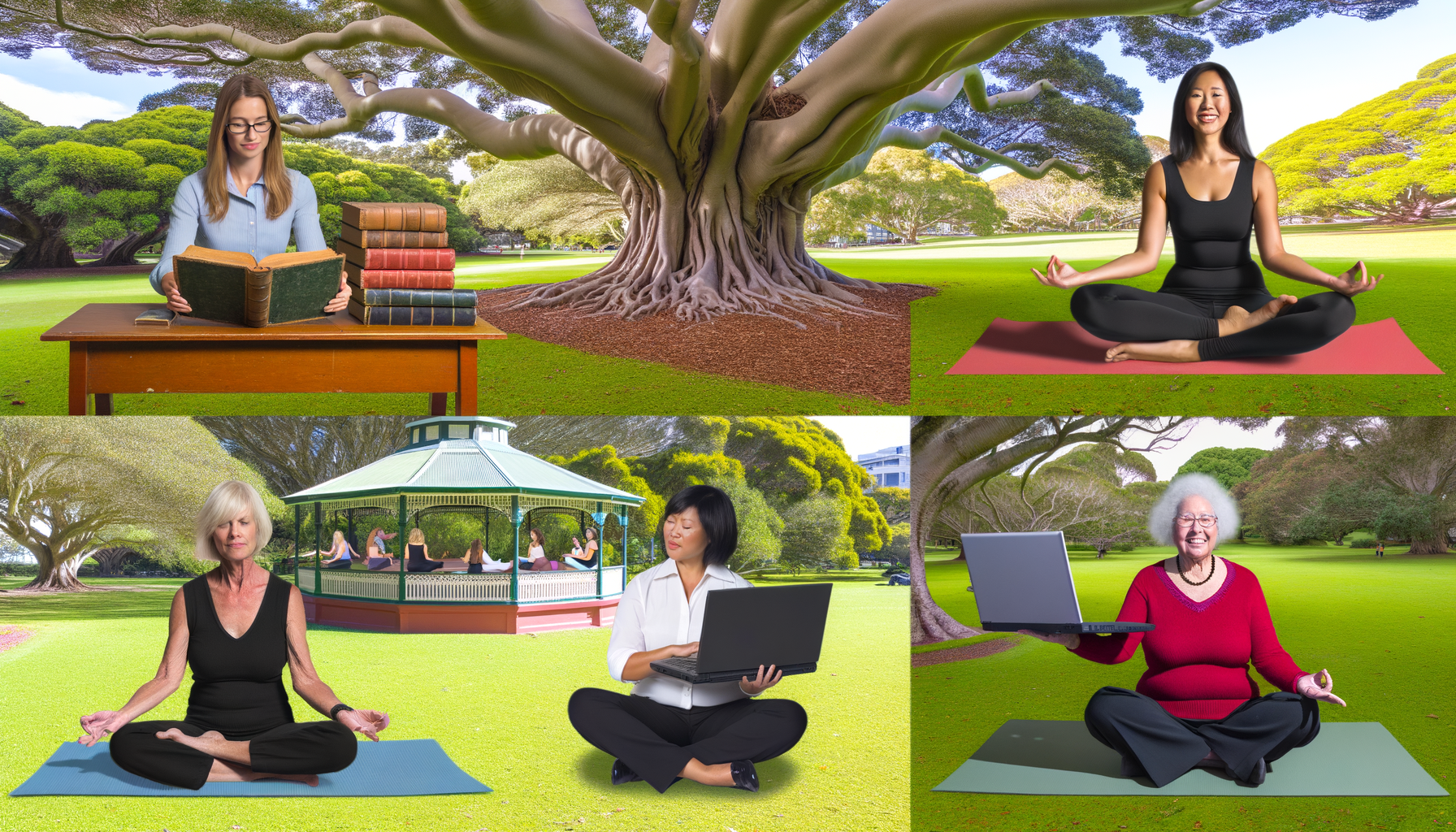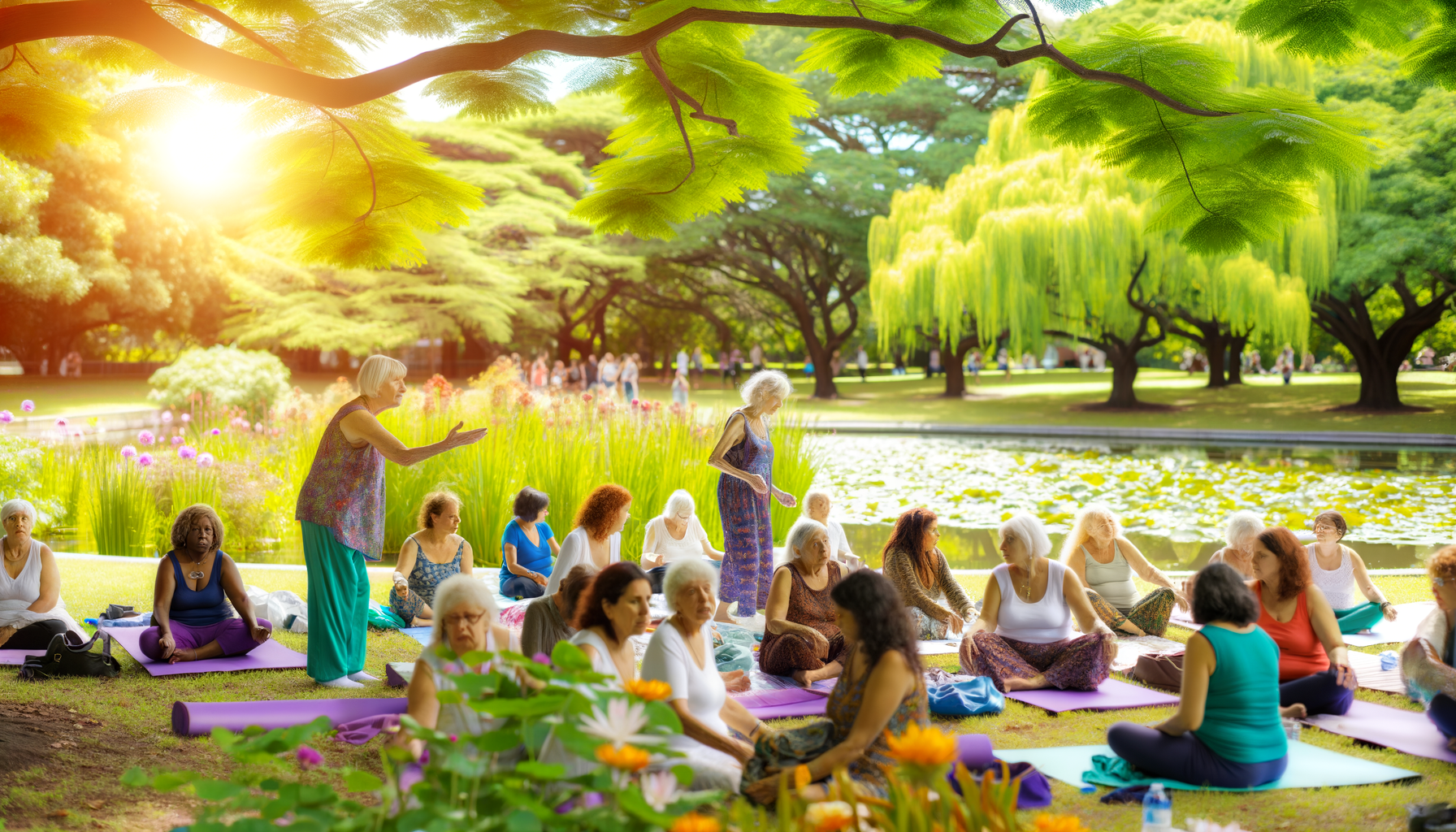
Introduction to Mentorship in the Digital Age
The Evolution of Mentorship
Mentorship has long been a cornerstone of personal and professional development, traditionally characterized by face-to-face interactions and guidance. However, the digital revolution has transformed this age-old practice. The advent of the internet and social media platforms has expanded the horizons of mentorship, enabling connections that transcend geographical boundaries and time zones. Digital mentorship leverages technology to create dynamic, accessible, and flexible mentoring relationships, allowing for a diverse and inclusive approach to learning and growth.
Importance of Guidance in Personal Growth
Guidance is a pivotal element of personal growth, and mentorship provides a structured pathway to acquire it. Mentors serve as compasses, guiding mentees through the complexities of their careers and personal development. They offer wisdom, experience, and support, helping mentees navigate challenges and seize opportunities. In the digital age, this guidance has become more crucial as individuals face an ever-changing landscape of skills and competencies required to thrive professionally.
Challenges and Opportunities in the Digital Landscape
The digital landscape presents both challenges and opportunities for mentorship. On one hand, the abundance of information and resources online can be overwhelming, making it difficult to discern credible advice. On the other hand, digital platforms offer unprecedented access to a global network of professionals and experts. This connected world allows for mentorship relationships that are not limited by proximity, enabling a rich exchange of ideas and cultural perspectives. However, the lack of physical interaction can affect the depth of the mentor-mentee relationship, necessitating new strategies to build trust and rapport virtually.
Despite these challenges, the opportunities for growth and learning in the digital age are immense. With the right approach, mentorship can flourish, providing individuals with the guidance they need to succeed in a connected world. As we continue to embrace digital tools and platforms, the essence of mentorship remains the same: a shared journey of learning, development, and empowerment.
Understanding Digital Mentorship
Defining Digital Mentorship
Digital mentorship, also known as e-mentoring or virtual mentorship, is a modern adaptation of traditional mentorship that leverages technology to connect mentors and mentees. Unlike the conventional model, which often relies on face-to-face interactions, digital mentorship occurs through various online platforms and communication tools. This form of mentorship enables individuals to seek guidance, share knowledge, and develop professionally regardless of geographical constraints or time zones.
How Digital Mentorship Differs from Traditional Models
Traditional mentorship is characterized by in-person meetings, where nonverbal cues and direct interaction play a significant role in building relationships. Digital mentorship, on the other hand, transcends physical boundaries, offering flexibility and accessibility that the traditional model cannot match. It allows for asynchronous communication, where mentors and mentees can interact at their convenience, and synchronous interactions through video conferencing and real-time messaging. This shift from a location-based to a connection-based approach has democratized access to mentorship, enabling a global reach and a diversity of perspectives.
- Accessibility: Digital platforms make mentorship available to anyone with an internet connection, removing geographical barriers.
- Flexibility: Mentors and mentees can communicate at times that suit their individual schedules.
- Cost-Effectiveness: Virtual interactions eliminate the need for travel and other expenses associated with in-person meetings.
- Global Reach: Digital mentorship allows for a broader pool of mentors and mentees from around the world, enriching the mentoring experience with diverse insights.
- Increased Engagement: Technology can facilitate more frequent and targeted interactions, enhancing the mentorship experience.
The Role of Technology in Facilitating Mentorship
Technology is the cornerstone of digital mentorship, providing the tools and platforms that make virtual guidance possible. Video conferencing software like Zoom, Skype, and WebEx allows for face-to-face communication, fostering a sense of connection despite physical distance. Social media platforms and professional networks such as LinkedIn enable mentors and mentees to connect, share experiences, and expand their networks. Online learning platforms and Massive Open Online Courses (MOOCs) offer educational resources that mentors can use to support their mentees’ growth.
Moreover, specialized mentoring software and applications streamline the management of mentoring programs, allowing for efficient pairing of mentors and mentees, scheduling sessions, and tracking progress. These digital tools not only facilitate communication but also enhance the quality of mentorship by providing just-in-time support, enabling real-time feedback, and allowing for the sharing of resources and knowledge across a wide array of subjects and industries.
In conclusion, digital mentorship is redefining the traditional mentor-mentee relationship by leveraging technology to create a more inclusive, flexible, and resource-rich environment for personal and professional development. As we continue to embrace the digital age, the potential for mentorship to impact lives and careers is boundless, limited only by our willingness to connect and engage with one another in this connected world.
Finding the Right Mentor in a Connected World
Identifying Personal Goals and Needs
Before embarking on the quest for a digital mentor, it is essential to identify your personal goals and needs. This introspective step ensures that you seek out a mentor whose expertise and experience align with your aspirations. Whether you aim to develop specific skills, gain industry insights, or expand your professional network, having a clear understanding of your objectives will guide you in finding a mentor who can truly facilitate your growth.
Leveraging Social Media and Professional Networks
In the digital age, social media and professional networks are invaluable tools for finding mentors. Platforms like LinkedIn, Twitter, and industry-specific forums provide access to a vast pool of potential mentors. To effectively leverage these networks:
- Optimize your profiles to reflect your professional interests and goals.
- Engage with content shared by experienced professionals and thought leaders.
- Join groups and discussions relevant to your field to increase visibility and connect with potential mentors.
Remember, the key is to build genuine connections rather than simply collecting contacts.
Evaluating Potential Mentors
Once you have identified potential mentors, it’s crucial to evaluate their suitability. Consider their professional background, mentoring experience, and willingness to engage in a mentorship relationship. Reach out with a personalized message expressing your admiration for their work and articulate why you believe they would be an ideal mentor for you. Be concise and respectful of their time, and provide a clear rationale for your request.
The Importance of Compatibility and Mutual Respect
Compatibility and mutual respect are the cornerstones of a successful mentor-mentee relationship. A mentor should not only possess the right expertise but also share similar values and communication styles. Compatibility fosters a comfortable learning environment, while mutual respect ensures that both parties are committed to the relationship. It’s important to have an initial conversation to gauge this fit and to set the tone for a productive partnership.
In conclusion, finding the right mentor in a connected world involves a blend of self-awareness, strategic networking, and thoughtful engagement. By identifying your goals, utilizing digital platforms, evaluating potential mentors, and prioritizing compatibility and respect, you can establish a mentorship that not only guides you through your current professional landscape but also empowers you for future challenges and opportunities.
The Mentor-Mentee Relationship Online
Establishing Communication and Boundaries
The foundation of any successful mentor-mentee relationship is clear communication and well-defined boundaries. In the digital age, this means setting expectations for how and when communication will take place. Will it be through email, a dedicated mentoring platform, or instant messaging apps? How often will you meet, and what is the expected response time for queries? Establishing these parameters early on prevents misunderstandings and ensures that both parties are on the same page. It’s also important to discuss the scope of the mentorship, including the topics that are off-limits and the level of confidentiality expected from both sides.
Building Trust in a Virtual Environment
Trust is a critical component of any relationship, and it can be more challenging to establish in a virtual environment where nonverbal cues are absent. To build trust online, both mentors and mentees should strive to be consistent, reliable, and transparent. This includes showing up for scheduled meetings on time, following through on commitments, and being open about expectations and limitations. Sharing personal experiences and professional challenges can also help in creating a bond, but it’s essential to maintain a professional demeanor that fosters mutual respect.
Maintaining Engagement and Accountability
Keeping the mentor-mentee relationship engaging and productive requires effort from both parties. Mentees should come to meetings prepared with updates and questions, while mentors should provide constructive feedback and actionable advice. Utilizing digital tools such as shared calendars for scheduling, project management software for tracking goals, and video conferencing for face-to-face interactions can enhance the sense of accountability. Regular check-ins and progress reviews help maintain momentum and ensure that the mentorship is yielding the desired outcomes for both the mentor and the mentee.
In conclusion, the mentor-mentee relationship online thrives on clear communication, trust, and engagement. By leveraging digital tools and adhering to established boundaries, mentors and mentees can foster a productive and rewarding experience that transcends physical distances.
Maximizing the Benefits of Digital Mentorship
Setting Clear Objectives and Expectations
One of the foundational steps in maximizing the benefits of digital mentorship is to set clear objectives and expectations. This involves a collaborative effort between mentors and mentees to define the purpose and desired outcomes of the relationship. Establishing these goals early on provides a roadmap for the mentoring journey and ensures that both parties are aligned in their efforts. It is also crucial to discuss and agree upon the frequency of communication, preferred digital channels, and response times to maintain a consistent and productive engagement.
Utilizing Digital Tools for Collaboration and Learning
The digital age offers a plethora of tools designed to facilitate effective mentorship. Video conferencing platforms, instant messaging apps, and virtual whiteboards allow for real-time, face-to-face interactions, fostering a sense of connection despite geographical distances. Additionally, document sharing and project management tools enable mentors and mentees to collaborate on shared documents, track progress, and provide feedback efficiently. Online learning platforms and resources, such as webinars and virtual workshops, further enrich the mentorship experience by allowing mentees to engage in self-paced learning tailored to their specific needs and interests.
Tracking Progress and Adapting Strategies
For digital mentorship to be truly effective, it is essential to track progress and adapt strategies as needed. This involves regular check-ins to assess the mentee’s development and the overall effectiveness of the mentorship. Digital mentoring platforms often include features that allow for goal setting, milestone tracking, and documentation of achievements, which promote accountability and ensure that the relationship remains purposeful and results-driven. By continuously evaluating the mentorship and being willing to adjust the approach, mentors and mentees can ensure that they are making the most of the digital tools and resources at their disposal.
In conclusion, digital mentorship, when leveraged with clear objectives, the right technology, and an adaptive approach, can lead to significant personal and professional growth. By embracing these strategies, mentors and mentees can forge a productive partnership that transcends the limitations of traditional mentorship and thrives in the connected world of today.
Challenges of Mentorship in the Digital Age
Navigating Miscommunication and Cultural Differences
In the digital realm, mentorship transcends geographical boundaries, bringing together individuals from diverse cultural backgrounds. While this diversity enriches the mentoring experience, it also introduces challenges in communication. Misunderstandings can arise from differing communication styles, social norms, and expectations. To mitigate these issues, it is essential for both mentors and mentees to practice empathy and cultural sensitivity. Establishing clear communication protocols and taking the time to learn about each other’s backgrounds can foster a more harmonious and effective mentoring relationship.
Dealing with Information Overload and Distractions
The digital age is characterized by a constant stream of information and potential distractions. Mentors and mentees may find themselves overwhelmed by the sheer volume of resources, communication tools, and notifications vying for their attention. To combat information overload, it is crucial to prioritize tasks, set boundaries for work and personal time, and utilize digital tools that aid in organization and focus. Establishing a structured mentoring schedule and adhering to it can help maintain clarity and purpose in the mentorship journey.
Ensuring Privacy and Data Security
With the rise of digital mentorship, concerns about privacy and data security have become more pronounced. Sensitive personal and professional information is often shared between mentors and mentees, making it imperative to use secure communication channels and data storage solutions. Both parties should be aware of the best practices for online security, such as using strong passwords, enabling two-factor authentication, and being cautious about sharing information on public or unsecured networks. Additionally, mentors and mentees should agree on confidentiality terms to protect both their privacy and the integrity of the mentorship.
In conclusion, while digital mentorship offers numerous advantages, it also presents unique challenges that must be navigated with care. By addressing miscommunication, managing information overload, and ensuring privacy and data security, mentors and mentees can create a productive and secure environment for growth and learning in the digital age.
Conclusion: Embracing the Future of Mentorship
The Continuous Evolution of Digital Mentorship
The landscape of mentorship is perpetually evolving, particularly in the digital realm. As we advance technologically, so too does the way we connect, learn, and grow professionally. Digital mentorship has shattered geographical barriers, enabling mentors and mentees to engage from opposite ends of the globe. This evolution has democratized access to guidance and expertise, allowing individuals to seek out the best minds in their fields, regardless of location.
Moreover, the rise of AI and machine learning has introduced new possibilities for personalized learning experiences. Digital platforms can now match mentors and mentees with unprecedented accuracy, taking into account a myriad of factors such as learning styles, professional goals, and personality traits. As we look to the future, we can expect digital mentorship to become even more integrated with our daily lives, utilizing data analytics and predictive algorithms to enhance the mentorship experience.
Encouraging Lifelong Learning and Adaptability
In a world where change is the only constant, adaptability and lifelong learning are not just beneficial; they are essential. Digital mentorship fosters an environment where continuous learning is the norm, and adaptability is a celebrated trait. Mentors can provide real-time feedback and resources that cater to the dynamic needs of their mentees, encouraging them to stay agile and informed in an ever-changing professional landscape.
Furthermore, digital mentorship platforms often come equipped with a plethora of learning materials, from webinars to e-books, making the pursuit of knowledge a more accessible and engaging endeavor. By embracing digital mentorship, individuals commit to a path of never-ending growth, ensuring they remain relevant and competitive in their careers.
Fostering Meaningful Connections in a Digital World
While digital interactions may lack the physical presence of traditional mentorship, they can still foster deep and meaningful connections. Video conferencing, instant messaging, and collaborative online tools have made it possible to build rapport and trust without ever meeting in person. These digital connections can be just as powerful, if not more so, due to their convenience and frequency.
Moreover, digital mentorship can lead to diverse and inclusive relationships that might not have been possible in a traditional setting. By transcending physical boundaries, individuals can connect with mentors from different cultures, backgrounds, and life experiences, enriching the mentorship experience and promoting a broader understanding of the world.
In conclusion, as we embrace the future of mentorship, we must recognize the transformative power of digital connections. The digital age has redefined what it means to guide and be guided, making mentorship more accessible, adaptable, and inclusive than ever before. By leveraging technology, we can ensure that the mentor-mentee relationship continues to thrive, providing a foundation for lifelong learning and meaningful connections that span the digital divide.








